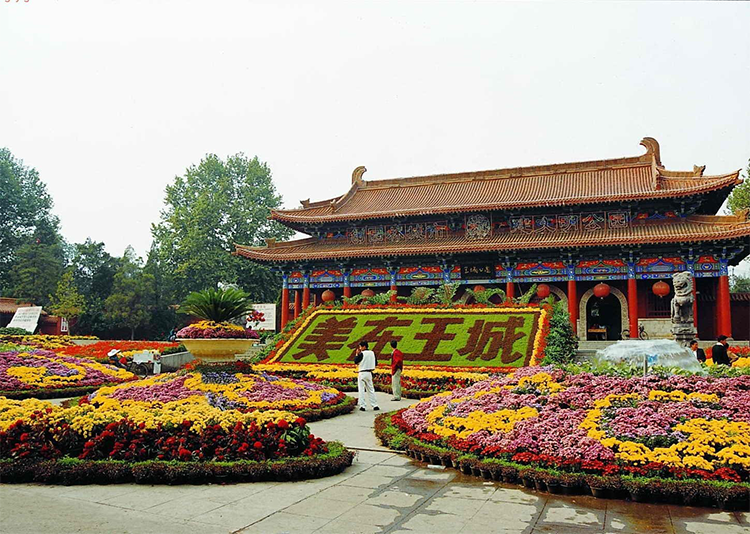Luoyang Peony Festival at Wangcheng Park: Guide to Blooms & Ancient Ruins
Introduction
Stroll the stone paths of Wangcheng Park and you walk atop the Eastern Zhou royal city ruins while surrounded by tens of thousands of blooming peonies. The park is both Luoyang’s green lung and a living history museum — the main venue for China’s famed peony festival, where natural beauty, Zhou-dynasty culture and a family-friendly zoo combine for a richly layered visitor experience.
1. Core features: The Peony Kingdom on a Millennium Site
Wangcheng Park’s spirit can be summed up as “an archaeological site, a sea of peonies, and a millennia of culture.” This nearly 40-hectare integrated park is built on the Eastern Zhou royal city ruins, skillfully blending historical remains, classical gardens and modern leisure facilities. It’s famous for its peonies, grounded in Zhou culture and highlighted by a large zoo — one of Luoyang’s three major parks and a national AAAA scenic area.
Unique selling points:
– Peony fields: About 130,000 peony plants across 880 varieties covering nine main color families; celebrated cultivars such as “Luoyang Red” particularly dazzle.
– Historical immersion: Recreated Eastern Zhou cityscape with reconstructed features like the Shao Music Platform (Shaoley Tai) and the commemorative Jisheng Pillars evoke the atmosphere of the Zhou court.
– Animal attractions: The largest zoo in western Henan with over 100 species, including South China tigers, African elephants and golden monkeys.
2. Theme atmosphere: A duet of history and nature
2.1 Immersive Zhou culture experience
The park’s core charm is its historic ambience. Approaching the park, visitors encounter reconstructed monuments such as the Jisheng Pillars, symbols of Zhou royal authority. The Shaoley Tai stage re-creates ancient court music and dance — here you can hear replicas of bronze chime bells and experience Zhou-era ceremonial soundscapes. The most arresting archaeological site is the “Tianzi Jia Liu” chariot-and-horse pit (the emperor’s six-horse procession), vividly evoking the pomp of Zhou royalty.
2.2 A natural panorama through the seasons
Spring is the park’s highlight, when peonies dominate the view; summer brings cool shade, autumn gilds the ginkgo trees and winter dusts pavilions with snow. Park design balances winding classical Chinese garden paths with open lawns and lakes — ideal for walking, picnicking or quiet contemplation.

3. Main activities and experiences
Must-see attractions:
– Peony viewing areas (best in April): Wander through nine color-family sections and don’t miss famed varieties like “Luoyang Red” and “Er Qiao.”
– Tianzi Jia Liu site: Get a close look at Eastern Zhou chariot pits and feel the scale of ancient royal ceremonies.
– Shaoley Tai performances (weekends and holidays): Hear replica chime-bell music and watch Zhou-era costumes and dances for an immersive cultural moment.
– Zoo exploration: Families love seeing South China tigers, African elephants and golden monkeys up close.
Leisure recommendations:
– Picnics and walks: Spacious lawns are perfect for family gatherings or couples.
– Boating on the lake: In spring and summer you can rent small boats for a relaxing ride.
– Photography spots: The reconstructed architecture, peony beds and animal interaction areas are excellent for photos.
4. Environment and visitor profile
Wangcheng Park mainly attracts local families, photography enthusiasts and history lovers. During the April peony festival the park is lively and festive; on regular days it feels calmer and suits a slower-paced visit. The park offers both active children’s play areas and tranquil historic zones, catering to varied visitor needs.
5. Suggested itinerary
– Recommended visit length: 2–4 hours (half a day if you include the zoo or a very detailed visit).
– Best seasons to visit: April (peony season); October–November (pleasant autumn scenery).
– Combination ideas:
– Morning: Peony viewing and heritage sites at Wangcheng Park
– Afternoon: Luoyang Museum for a deeper dive into the ancient capital’s history
– Evening: Lijingmen Night Market to sample local specialties like Luoyang water banquet and beef soup
6. Practical tips
Tickets & opening hours:
– Opening hours: 6:30–19:30 (summer hours extended to 21:00)
– Admission: Around RMB 30 (may be adjusted during the peony festival). Zoo admission charged separately (about RMB 15).
– Payments: Cash, WeChat Pay/Alipay accepted; some ticket windows accept international credit cards (Visa/Mastercard).
Getting there:
– Metro: Luoyang Metro Line 1, Wangcheng Park Station provides direct access.
– Bus: Multiple bus routes stop at the Wangcheng Park station.
– Driving: Parking available at the south and east gates (fees roughly RMB 5–10 per hour).

Other useful info:
– Language: Signs are mostly bilingual (Chinese/English); some staff speak basic English.
– Food: Park vendors and casual restaurants serve snacks and simple meals; try local Luoyang specialties at nearby markets.
– Best photo spots: The central peony pavilion, beside the Tianzi Jia Liu site, and in front of the Shaoley Tai stage.
7. Local tips and avoid-the-pitfalls guide
– Hidden gem: A quiet bamboo pathway on the park’s north side is ideal for visitors seeking solitude.
– Avoidance tips:
– Peak crowds: The peony festival in April draws the biggest crowds — arrive before 9:00 AM to beat the rush.
– Animal activity: Zoo animals are often more active in the morning; late afternoons can be quieter.
Conclusion: A cultural oasis in Luoyang
Wangcheng Park is more than a park — it’s living history. Enjoy China’s national flower in full bloom, explore Eastern Zhou ruins, meet rare animals and soak up the atmosphere of one of China’s ancient capitals. Whether you’re a culture buff, nature lover or family traveler, Wangcheng Park offers memorable experiences. Add it to your Luoyang itinerary — the flowers and the past are waiting to be discovered.


